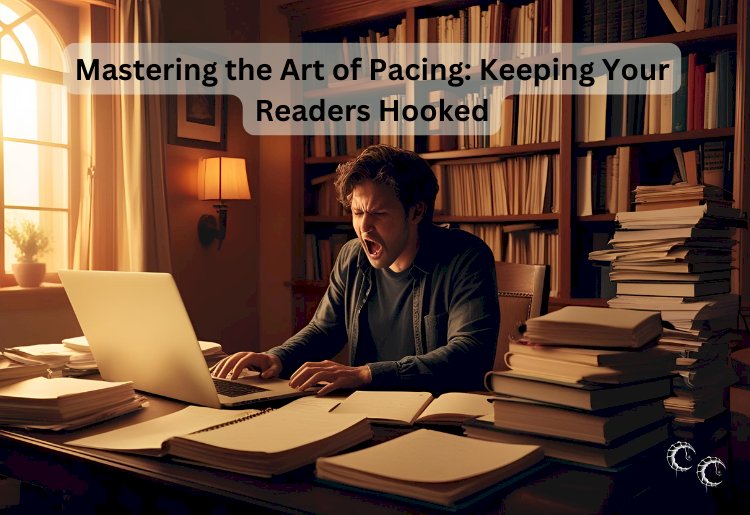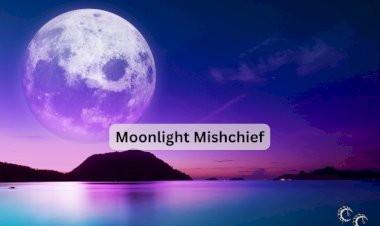Mastering the Art of Pacing: Keeping Your Readers Hooked

Pacing is one of the most crucial elements of storytelling. It dictates how a story unfolds and determines whether readers remain engaged or lose interest. Striking the right balance between fast-moving action and slower, reflective moments keeps your audience hooked from start to finish. Here’s how you can master the art of pacing in your writing.
Understand What Pacing Means
Pacing refers to the rhythm and speed at which your story progresses. It’s about knowing when to slow down to provide details or character development and when to pick up the pace to build excitement.
Fast vs. Slow Pacing:
-
Fast pacing works well for action scenes, climaxes, or moments of high tension.
-
Slow pacing is ideal for introspection, world-building, and character interactions.
Effective storytelling often involves alternating between these two, creating a dynamic flow that holds readers' interest.
Techniques for Controlling Pacing
1. Vary Sentence Structure
Short sentences and paragraphs convey urgency and excitement, while longer, more complex sentences encourage reflection and depth.
-
Fast pace example: "He ran. The door slammed shut. Shadows moved closer."
-
Slow pace example: "The sun dipped below the horizon, casting the village in a golden glow, as if time itself had paused to marvel at the beauty of the moment."
2. Use Dialogue Wisely
Dialogue can be a powerful tool to influence pacing. Quick exchanges speed up the narrative, while longer, thoughtful conversations can slow things down.
-
Fast-paced dialogue:
-
“Did you see that?”
-
“No. What happened?”
-
“Run!”
-
-
Slow-paced dialogue:
-
“I’ve been thinking about what you said the other day,” she began. “Maybe it’s time we finally confront what we’ve been avoiding.”
-
3. Manipulate Chapter Lengths
Short chapters or sections can heighten suspense and keep readers turning pages. Longer chapters allow for deeper exploration of themes and character development.
Consider structuring your chapters to reflect the mood of your scenes. A high-stakes chase might call for a series of short, punchy chapters, while a heartfelt reunion could be better suited to a longer, more detailed chapter.
Balancing Action and Reflection
4. Build Tension Before Releasing It
Pacing often hinges on the ebb and flow of tension. Build suspense through slower moments of foreshadowing or mystery, then reward readers with action or revelations.
For instance, in a thriller, you might describe a character’s anxiety as they approach a locked door, heightening tension, before unleashing the chaos of what lies behind it.
5. Give Readers Time to Breathe
After intense scenes, allow space for characters (and readers) to process what has happened. Reflective moments provide emotional weight and prevent the story from feeling relentless.
Avoid Common Pacing Pitfalls
6. Don’t Overload with Exposition
Excessive backstory or world-building can bog down your narrative. Integrate details organically into the action or dialogue.
7. Avoid Overused Cliffhangers
While cliffhangers are great for maintaining suspense, using them too frequently can frustrate readers. Balance them with resolutions to create a satisfying rhythm.
Pacing in Different Genres
-
Thrillers and Action: Fast-paced scenes dominate, with bursts of slower moments for character development.
-
Romance: Focus on emotional pacing, balancing tension with moments of intimacy and connection.
-
Fantasy and Science Fiction: Blend slow world-building with fast-paced battles or conflicts to immerse readers without overwhelming them.
Test Your Pacing
8. Read Your Work Aloud
Hearing your story can reveal uneven pacing. If you find yourself rushing through certain parts or losing interest, it’s a sign that adjustments are needed.
9. Get Feedback
Ask beta readers for their impressions. Where did they feel most engaged? Were there any parts that felt too slow or rushed?
In Conclusion
Mastering pacing is about knowing your story’s rhythm and understanding your audience’s needs. By varying sentence structure, balancing action with reflection, and carefully crafting each scene, you can keep readers captivated from beginning to end. Whether you’re writing a high-octane thriller or a sweeping romance, mastering pacing ensures your story will resonate with your audience and leave a lasting impression.


























